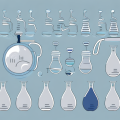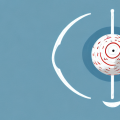Trigger point therapy is a popular form of self-care that involves the application of pressure to specific areas of muscle tension or knots. This technique is believed to help relieve pain, improve circulation, and promote relaxation. While there are many tools and techniques available for trigger point therapy, one of the most affordable and accessible options is using a tennis ball. In this article, we’ll explore the benefits of using a tennis ball for trigger point therapy and provide a step-by-step guide to using this tool effectively.
What is Trigger Point Therapy and How Does it Work?
Before diving into the benefits of using a tennis ball for trigger point therapy, it’s essential to understand what this therapy entails and how it works. Trigger point therapy is a form of self-massage that targets areas of myofascial pain or tension, commonly referred to as trigger points. Trigger points are thought to form in response to injury, overuse, or stress, and can cause pain or discomfort in other areas of the body. By applying focused pressure to these points, trigger point therapy aims to release tension, improve circulation, and promote relaxation.
Trigger point therapy can be performed using various tools, including foam rollers, massage balls, and even your own hands. However, using a tennis ball for trigger point therapy is a popular and effective method. The firmness and size of a tennis ball make it ideal for targeting specific trigger points, and it can be easily maneuvered to reach different areas of the body. Additionally, using a tennis ball for trigger point therapy can be a cost-effective alternative to professional massage therapy, as it can be done at home with minimal equipment.
Tennis Balls as an Affordable and Accessible Tool for Trigger Point Therapy
One of the benefits of using a tennis ball for trigger point therapy is that it is a highly affordable and accessible tool. Unlike more complex tools like foam rollers or massage balls, you can typically find tennis balls at any sports store or even in some supermarkets. Additionally, they are lightweight and small enough to carry with you on the go, making them an ideal self-care option for those with a busy lifestyle.
Another advantage of using tennis balls for trigger point therapy is that they can be used to target specific areas of the body with precision. By placing the ball on a trigger point and applying pressure, you can release tension and alleviate pain in that specific area. This targeted approach can be especially helpful for those with chronic pain or injuries in specific areas of the body, such as the neck, shoulders, or hips.
Understanding Trigger Points: Common Areas of Tension and Pain
Trigger points can form in various muscle groups throughout the body, but there are some common areas of tension and pain that are worth noting. For example, the upper back and shoulders are common areas for trigger points to form, especially in individuals who spend extended periods sitting at a desk or using a computer. Similarly, the hips and glutes can also be prone to trigger points, particularly in those who lead a sedentary lifestyle or participate in activities like running or biking.
Another common area for trigger points to form is in the neck and jaw muscles. This can be caused by stress, poor posture, or teeth grinding. Trigger points in these areas can lead to headaches, neck pain, and even temporomandibular joint (TMJ) disorder. It’s important to address trigger points in the neck and jaw to prevent further discomfort and potential long-term issues.
The Science Behind Using a Tennis Ball for Trigger Point Release
While there is limited research on the effectiveness of using a tennis ball for trigger point release specifically, there is some evidence to support the broader use of self-massage techniques for pain relief and relaxation. One study found that self-massage was more effective than rest for reducing the symptoms of delayed onset muscle soreness (DOMS) following exercise. Another study found that self-massage using a foam roller was effective for reducing pain, tenderness, and muscle tension in individuals with knee osteoarthritis.
Additionally, using a tennis ball for trigger point release may be beneficial due to its ability to target specific areas of tension or pain. By applying pressure to a specific point, known as a trigger point, with a tennis ball, you can help release tension and promote relaxation in that area. This technique is often used by athletes and individuals with chronic pain or tension in their muscles.
Step-by-Step Guide to Using a Tennis Ball for Trigger Point Therapy
If you’re interested in trying tennis ball trigger point therapy for yourself, follow these steps:
- Find a flat surface to lay on, like a yoga mat or carpeted floor.
- Place the tennis ball on the area of muscle tension or pain, like your upper back or glutes.
- Apply pressure to the tennis ball by gently pressing your body weight into it.
- Roll the tennis ball over the affected area, using small circular or back-and-forth motions.
- Repeat on the other side or in other areas of tension or pain.
Tips for Maximizing the Benefits of Tennis Ball Trigger Point Release
While tennis ball trigger point release can be highly effective, there are some tips to keep in mind to maximize its benefits. First, be sure to breathe deeply and slowly as you apply pressure to the tennis ball, as this can help you release deeper layers of tension. Additionally, be sure to drink plenty of water before and after your session to help flush out any toxins released from the muscles. Finally, don’t be afraid to try different techniques or pressure levels to find what works best for your unique needs.
Comparing Tennis Balls to Other Tools: Which is Best for Trigger Point Therapy?
While tennis balls are an effective and affordable option for trigger point therapy, there are other tools available that may offer different benefits. Foam rollers, for example, can be useful for larger areas of tension or for those who prefer more broad pressure. Massage balls come in various shapes and sizes, making them ideal for targeting specific muscle groups, like the feet or hands. Ultimately, the best tool for trigger point therapy will depend on your preferences and needs.
Combining Tennis Ball Therapy with Other Forms of Self-Care for Optimal Results
Finally, it’s worth noting that tennis ball trigger point therapy is just one form of self-care that can help promote relaxation, reduce tension, and relieve pain. Consider combining this technique with other forms of self-care, like stretching, yoga, or meditation, for optimal results. Additionally, be sure to speak with your healthcare provider if you experience chronic or severe pain to ensure that trigger point therapy is safe and appropriate for your needs.
Addressing Safety Concerns: Precautions to Take When Using a Tennis Ball for Trigger Point Release
While tennis ball trigger point therapy is generally considered safe, there are some precautions to keep in mind. First and foremost, never apply pressure directly to your spine or any bones. Additionally, be sure to start with gentle pressure and gradually increase as your muscles become more accustomed to the technique. Finally, if you experience any pain or discomfort during a session, stop immediately and consult with your healthcare provider before continuing.
Overall, tennis ball trigger point therapy is a simple and effective form of self-care that can offer numerous benefits, from reducing tension and pain to promoting relaxation and improved circulation. By following these tips and techniques, you can use a tennis ball to release trigger points and enjoy the many benefits of self-massage.





